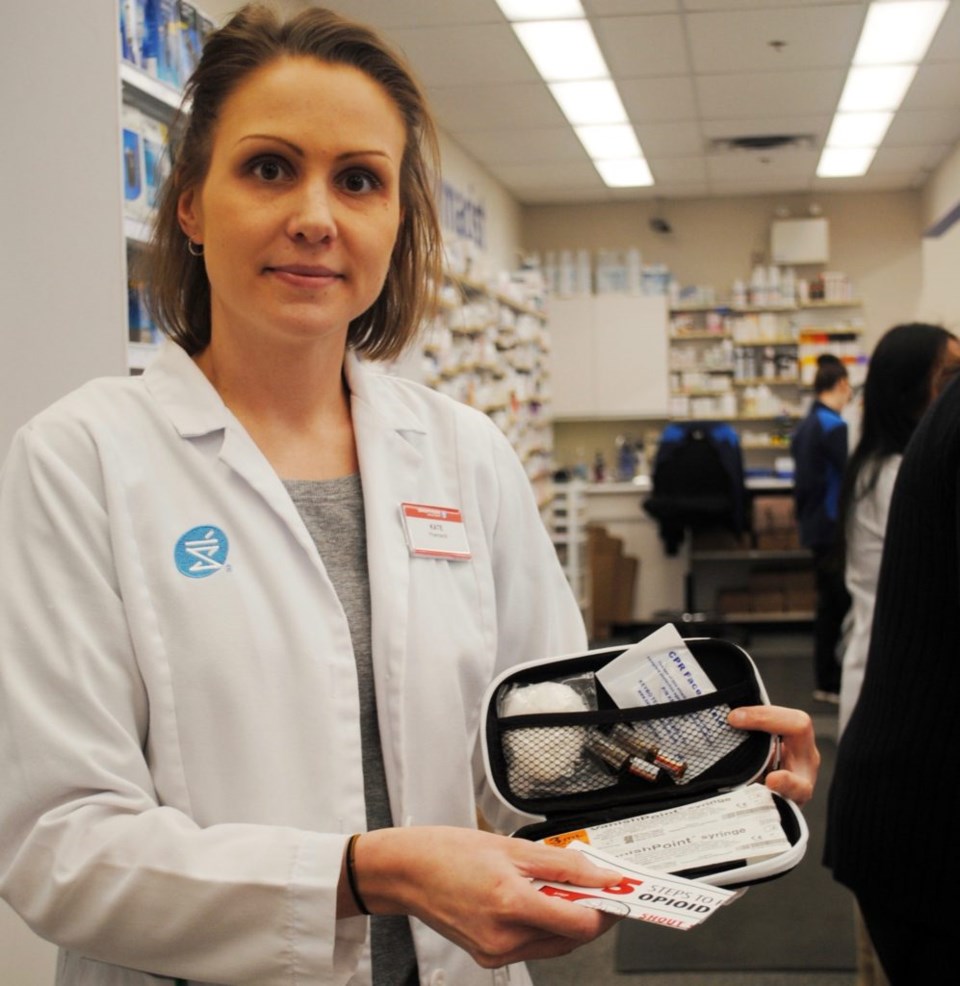
While there is currently no evident opioid crisis in Niagara-on-the-Lake, local pharmacists are prepared to offer assistance and are training others to do so as well.
Opioid overdose rates in Niagara leapt by 225 per cent from 2016 to 2017, according to the regional associate medical officer of health, Dr. Andrea Fuller.
Whether opioids are taken by prescription or recreationally, a naloxone kit has the ability to briefly override an opioid overdose, literally bringing a patient back to life.
The kits are free to anyone with a health card, says pharmacist Kate Wojtowicz at the local Shoppers Drug Mart. An appointment with the pharmacist is required, for comprehensive training she says can take anywhere from 15 minutes to an hour, depending on the recipient’s level of knowledge. At the end of the session one receives a kit with either injectable naloxone or an intranasal spray (she says the latter is generally preferred by the public), and a certification card. As well as the potential to save a life.
However there are possible complications, in that it is a temporary fix, so professional medical help needs to be alerted and engaged immediately.
Kit Andres, a NOTL native, says, “The kit is about the size of a pencil case and light enough that I can keep it attached to the strap of my backpack with no problems. I like keeping it visible for different reasons; it’s handy in case I ever need to use it, but also I think the visibility helps reduce stigma. Drug use and addiction are still treated by many as moral failings and that’s not true,” says the activist. “People in our communities are dying because they are shamed into not seeking help, or the help is just not there. Drug use and addiction are not moral issues and we all need to take responsibility in reducing the shame and stigma that surround them.”
Andres goes on to say, “NOTL has one of the lowest rates of opioid overdoses, so while it’s less likely I’ll need to use it in town compared to downtown St Catharines, it’s a great conversation starter that I can use to encourage other community members to get trained. There’s nothing to lose by getting this life-saving training. Opioid addiction doesn’t discriminate based on income level, race, or what part of town you live in. Overdoses don’t either.”
Laura Tait, library manager, agrees. She says she read about libraries — as public institutions — carrying the kits. She looked into it, and promptly arranged for training. “It was really eye-opening,” she says. “All of our staff came to the training. Some dismissed it because they felt we wouldn’t need this in NOTL — but the opioid crisis could affect anyone, even very innocent people who use painkillers.” Tait likens the kits behind their counter to the defibrillator in the library’s entryway: they’re another potentially life-saving tool.
Sean Simpson of Simpson’s Pharmasave also agrees ‘Ontario’s prettiest town’ is not immune. “I have never had to administer naloxone, but I have dispensed to people who have had to use their kit.” The pharmacist continues, “From the potentially devastating fact of someone suffering an accidental or intentional overdose, this is a relatively easy way to give that person a second chance.”
Naloxone kits and training are available through pharmacies and community-based organizations. More information can be found online at the Ministry of Health and Long-Term Care, and ontario.ca.